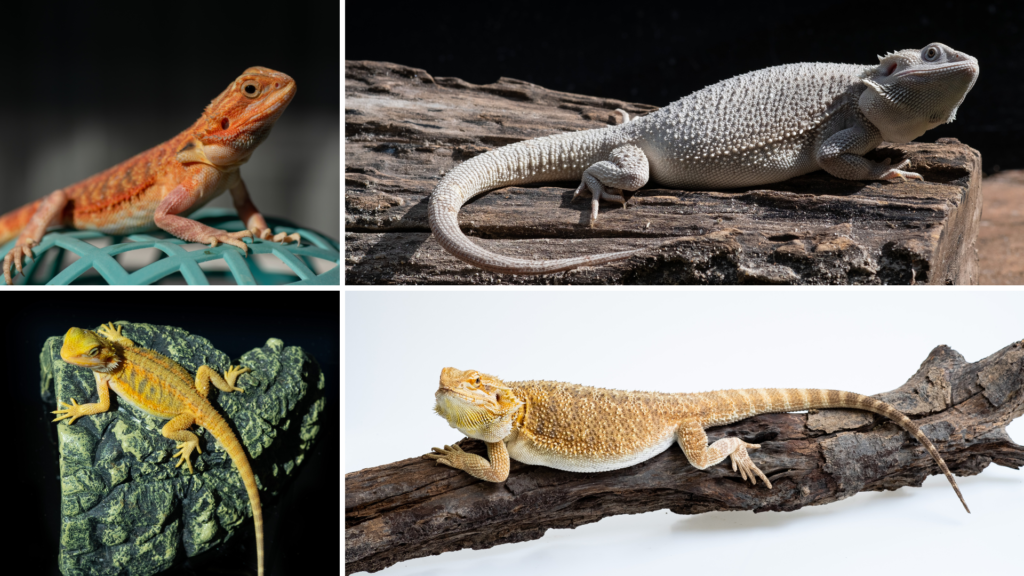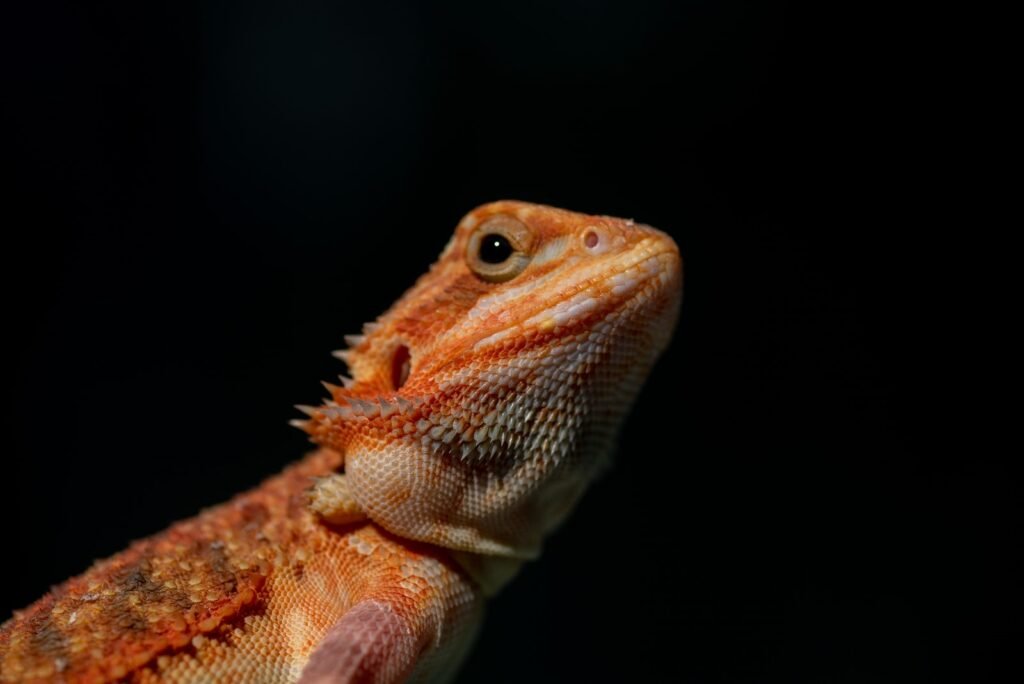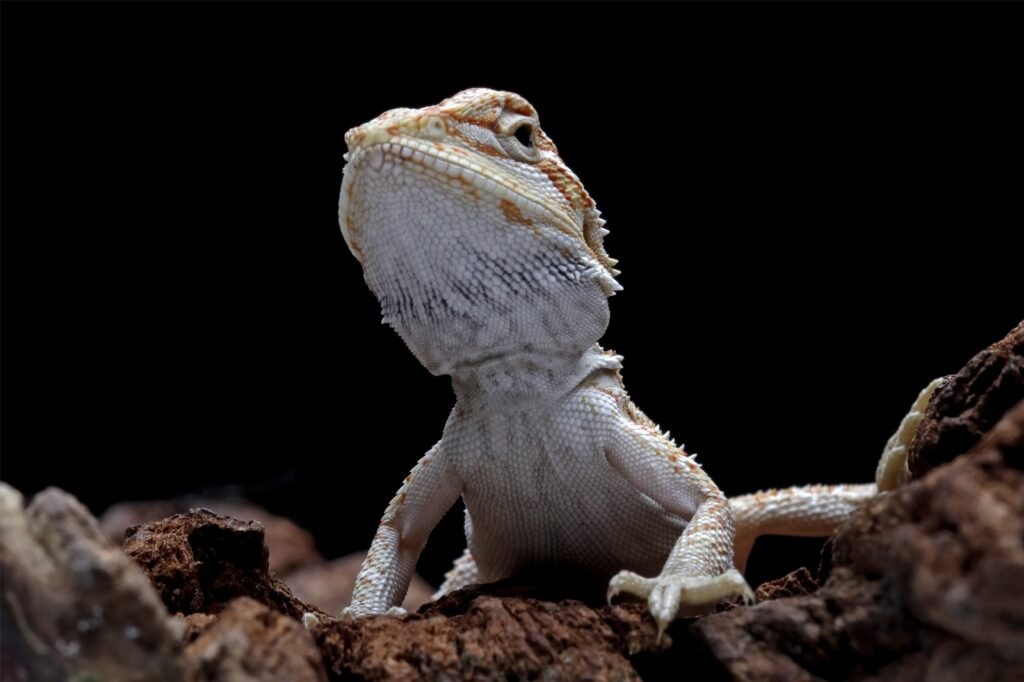Bearded dragons, also known as Pogona vitticeps, have become increasingly popular as pets in recent years. In this article, we’ll delve into their history, their role as beloved companions, and the various types of bearded dragons you may encounter.

History and Background
Bearded dragons, have a rich history rooted in the deserts and woodlands of Australia. These fascinating reptiles have roamed the Australian landscape for centuries, adapting to the harsh conditions of their native habitat.
Historically, bearded dragons played a vital role in the ecosystem, preying on insects and small animals while also serving as prey for larger predators. Their ability to thrive in arid environments and their keen hunting instincts contributed to their survival in the wild.
In the early 19th century, European explorers and naturalists began to document the unique fauna of Australia, including the bearded dragon. These early observations sparked interest in bearded dragons among scientists and enthusiasts around the world.
The first recorded scientific description of the bearded dragon species occurred in the late 19th century, leading to further study and classification of different subspecies and morphs. As interest in reptiles grew, bearded dragons became popular subjects for research and breeding programs.
By the late 20th century, bearded dragons had transitioned from obscure desert dwellers to beloved pets in households worldwide. Advances in captive breeding techniques and habitat management have made it easier than ever for enthusiasts to care for these captivating creatures in a domestic setting.
Today, bearded dragons are cherished companions in homes, schools, and zoological institutions across the globe. Their docile nature, distinctive appearance, and relatively low-maintenance care requirements have cemented their status as one of the most popular reptile pets.
As we continue to learn more about bearded dragons and their natural history, our appreciation for these remarkable reptiles only grows. Join us as we explore the world of bearded dragons and delve into their fascinating history and background.
Overview of Bearded Dragons as Pets
Bearded dragons, also known as “beardies,” are captivating reptiles that have surged in popularity as pets. These gentle creatures offer a rewarding and interactive pet ownership experience.
As pets, bearded dragons provide companionship and entertainment for enthusiasts of all ages. Their docile nature and friendly demeanor make them ideal pets for families, individuals, and reptile enthusiasts alike.
Whether lounging under their heat lamp or exploring their habitat, bearded dragons display curious behavior that delights their caregivers.
One of the key attractions of bearded dragons as pets is their calm temperament, which makes them suitable for handling and interaction with humans.
Unlike some other reptile species, bearded dragons are known for their tolerance of handling, making them excellent pets for families with children or individuals seeking a hands-on pet ownership experience.
Bearded dragons have relatively low-maintenance care requirements compared to other reptiles, making them popular pets for beginners and experienced reptile keepers alike. Ensuring an appropriate habitat, complete with adequate lighting, heating, and humidity, is crucial for their overall health and happiness.
Additionally, a balanced diet consisting of live insects, leafy greens, and occasional fruits is crucial for their overall nutrition and vitality.
These fascinating reptiles have a long lifespan, with some individuals living upwards of 10 to 15 years with proper care. This longevity allows owners to form deep and lasting bonds with their pets over many years, creating cherished memories and experiences together.
In conclusion, bearded dragons make fantastic pets for individuals and families seeking a unique and rewarding pet ownership experience. Whether you’re a seasoned reptile enthusiast or a newcomer to the world of exotic pets, a bearded dragon may be the perfect addition to your family.
Species of Bearded Dragons
The world of bearded dragons is fascinating and diverse, featuring several types that differ in size, color, and habitat preferences. Native to Australia, these reptiles have adapted to various environments across the continent.
From the well-known Central Bearded Dragon, which is commonly kept as a pet, to the less familiar Nullarbor Bearded Dragon, each type offers a glimpse into the adaptability and diversity of these creatures.
Here’s a brief look at the unique types of bearded dragons that reptile enthusiasts may encounter or keep.
🟢Central Bearded Dragon (Pogona vitticeps): The most popular pet species, recognizable by its wide distribution across arid to semiarid regions of Australia. They display a range of colors and are known for their beard display.
🟢Eastern Bearded Dragon (Pogona barbata): Found along the eastern coasts of Australia, this species is known for its ability to change color during social interactions and can appear more robust than the Central species.
🟢Dwarf Bearded Dragon (Pogona minor): Smaller in size, this species resides in the Western and interior regions of Australia. They are adaptable and inhabit a variety of environments.
🟢Western Bearded Dragon (Pogona minor minima): A subspecies of the Dwarf Bearded Dragon, this type is native to the coastal dunes of Western Australia, notable for its smaller size and distinct habitat.
🟢Mitchell’s Bearded Dragon (Pogona mitchelli): Found in the northwest of Australia, they are less common in captivity and can be identified by their distinct, less spiky scales.
🟢Nullarbor Bearded Dragon (Pogona nullarbor): This species is named after the Nullarbor Plain where it’s found. It has a very distinct appearance due to its lack of beard or spines on the throat.
🟢Rankin’s Bearded Dragon (Pogona henrylawsoni): Similar to the Central Bearded Dragon but smaller, this species is often found in the black soil plains of Queensland.
🟢Drysdale River Bearded Dragon (Pogona microlepidota): Discovered in the northern Kimberley region of Western Australia, this species is one of the least studied due to its remote location.
Morphs of Bearded Dragons
Bearded dragons, one of the most popular reptiles in the pet trade, come in a variety of morphs, each with its own set of distinctive characteristics. These morphs have been developed through selective breeding and exhibit unique colorations, patterns, and scale textures. Ranging from the smooth, scale-less Silkbacks to the patternless Zeroes, bearded dragon morphs offer a palette of visual diversity that caters to a wide range of preferences for enthusiasts and keepers alike.
Whether you’re drawn to the striking Translucents or the subtle hues of the Witblits, there’s a bearded dragon morph for every admirer of these charismatic creatures.
🔵Normal Scale: The quintessential bearded dragon displaying the species’ natural rugged and spiny scales which give them a prehistoric look and help with their camouflage in the wild.
🔵Leatherback: This morph has a distinctive smooth back with smaller, less pronounced spikes than the normal, reducing the roughness of their overall texture and giving them a sleeker silhouette.
🔵Silkie/Silkback: Completely scaleless, Silkbacks have a soft skin that resembles human skin to touch. Their lack of scales presents a unique, almost amphibian appearance, but also requires extra care against damage and dehydration.
🔵Translucent: Known for their semi-transparent skin when young, Translucents often have piercing, light-colored eyes. As they mature, their skin becomes less transparent but retains a distinctive clarity.
🔵Hypo (Hypomelanistic): Characterized by a significant reduction in dark pigments, Hypo bearded dragons boast a lighter, brighter appearance which enhances the visibility of their colors and patterns.
🔵Hypo Translucent: A striking combination of the Hypo and Translucent traits, these dragons exhibit both lighter colors due to reduced melanin and semi-transparent skin, often with a ghostly luminance.
🔵Dunner: This morph has a unique scale pattern where scales point in different directions, giving them a textured look. Dunners can also present an array of colors that are enhanced by their unusual scale texture.
🔵Zero: Known for their lack of patterns and colors, Zeros display a stark, pale, almost ethereal presence. Their uniform coloration ranges from silvery to white, embodying a minimalist beauty.
🔵Witblits: Witblits lack patterning and offer a smooth gradient of often warm, earthy colors. Their consistent coloration extends across the entirety of their bodies, offering a canvas-like appearance.
🔵Paradox: The wild card of bearded dragon morphs, Paradox dragons exhibit unpredictable and contrasting spots or blotches of colors that may appear to float over their base color, making each one uniquely patterned.
🔵Albino: Albino bearded dragons are a rare and beautiful morph. Their pure white or pale pink scales and striking red eyes create a truly ghostly appearance. Sensitive to light, they require extra care but offer a unique addition to any reptile lover’s collection.
🔵Melanistic: Melanistic bearded dragons are a striking morph with increased black pigmentation (melanin). This creates a darker, sometimes almost black, coloration. Their unique, shadowy appearance makes them highly sought-after by reptile enthusiasts.
If you’ve enjoyed our introductory guide to Bearded Dragons, and are ready to take the next step, don’t miss out on our Choosing the Right Bearded Dragon Comprehensive Guide!



